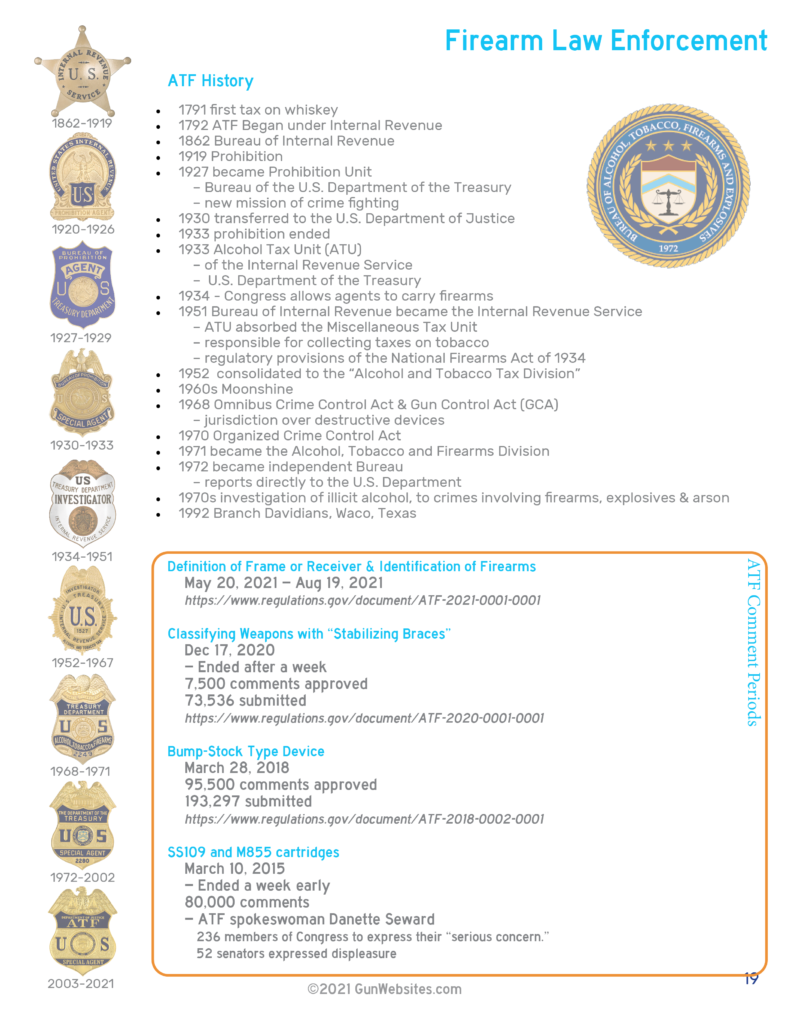Firearm law enforcement in the United States
At the federal level, the Bureau of Alcohol, Tobacco, Firearms and Explosives (bATFe) is responsible for enforcing federal firearm laws, which include regulations on the manufacture, sale, and possession of firearms. The ATF conducts criminal investigations related to firearms trafficking, illegal firearms sales, and the unlawful possession of firearms, and works with other law enforcement agencies to bring charges against individuals who violate federal firearm laws.
Firearm law enforcement is also carried out by state and local agencies, which may have their own laws and regulations related to firearms. State police departments and sheriff’s offices often work in conjunction with federal agencies to enforce firearm laws, and may also conduct their own investigations and prosecutions related to firearms crimes.
Enforcement of firearm laws can take many forms, including criminal investigations, compliance inspections of firearms dealers and manufacturers, and outreach and education programs aimed at promoting responsible firearms ownership.
 ATF
ATF
the Bureau of Alcohol, Tobacco, Firearms and Explosives (ATF) enforces regulations on the manufacturing, importation, and distribution of firearms, as well as the licensing of firearms dealers and manufacturers.
- 1791 first tax on whiskey
- 1792 ATF Began under Internal Revenue
- 1862 Bureau of Internal Revenue
- 1919 Prohibition
- 1927 became Prohibition Unit
– Bureau of the U.S. Department of the Treasury
– new mission of crime fighting - 1930 transferred to the U.S. Department of Justice
- 1933 prohibition ended
- 1933 Alcohol Tax Unit (ATU)
– of the Internal Revenue Service
– U.S. Department of the Treasury - 1951 Bureau of Internal Revenue became the Internal Revenue Service
– ATU absorbed the Miscellaneous Tax Unit
– responsible for collecting taxes on tobacco
– regulatory provisions of the National Firearms Act of 1934 - 1952 Internal Revenue Service consolidated internal enforcement as the “Alcohol and Tobacco Tax Division”
- 1960s Moonshine
- 1968 Omnibus Crime Control Act & Gun Control Act (GCA)
– jurisdiction over destructive devices - 1970 Organized Crime Control Act
- 1971 became the Alcohol, Tobacco and Firearms Division
- 1972 became independent Bureau
– reports directly to the U.S. Department - 1970s investigation of illicit alcohol, to crimes involving firearms, explosives, and arson
- 1992 Branch Davidians, Waco, Texas
- 2016 collected a total of $68,614,000 from NFA firearms
- 2020, ATF had 5,082 employees, including 2,653 special agents and 760 industry operations investigators. Its FY 2020 enacted budget was approximately $1.4 billion
https://www.atf.gov/about-atf/budget-performance
https://www.atf.gov/firearms/docs/report/2021-firearms-commerce-report/download
FBI
- NICS
How many firearms do the FBI, ATF and other law enforcement loose each year on average?
According to a report by the Government Accountability Office (GAO) in 2019, between 2014 and 2018, the ATF reported losing a total of 624 firearms, while the FBI reported losing a total of 276 firearms. These numbers include lost or stolen firearms, as well as those that were destroyed or damaged.
Here’s a breakdown of the number of firearms lost or stolen by these agencies in each of the five years between 2014 and 2018, according to the same GAO report:
ATF:
- 2014: 109
- 2015: 105
- 2016: 109
- 2017: 136
- 2018: 165
FBI:
- 2014: 38
- 2015: 49
- 2016: 63
- 2017: 43
- 2018: 83
It’s worth noting that these numbers may not be comprehensive or completely accurate, as reporting lost or stolen firearms is not always consistent across agencies, and some cases may go unreported.